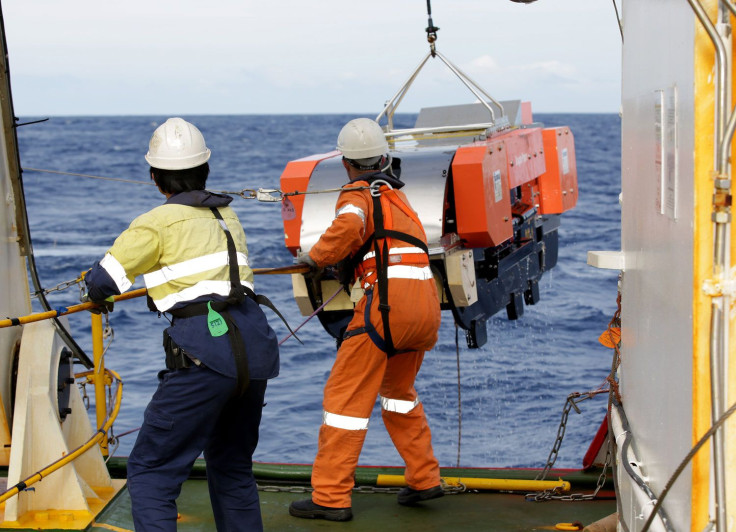MH370: Authorities Say Vast Search Zone Delaying Unraveling Of Greatest Aviation Mystery

The unimaginable scale of the southern Indian Ocean has made it difficult for search teams to locate Malaysia Airlines Flight MH370 even after a year of extensive search, according to authorities. The missing plane, which disappeared on March 8, 2014, continues to elude discovery despite the launch of the most expensive search operation in aviation history.
Mike Dixon, a former British Royal Navy seaman from Norfolk who is part of the search team, spoke about the difficult situations authorities have faced in looking for the aircraft, which is believed to have crashed in a remote part of the Indian Ocean, now called the priority search area, based on satellite data. Underwater devices continue to scour an area of over 23,000 square miles, but the Boeing 777-200 jet is a very small “target” compared to the ocean bed.
"Although a plane looks large when you see it on the ground, when you look at the area we are covering that plane is pretty small,” Dixon told BBC, adding that the waters in the search zone measure over 16,000 feet in depth.
Flight MH370 went missing while on its way to Beijing from Kuala Lumpur with 239 people on board, triggering a massive search operation, which is being led by Australia. In the initial days of the plane's disappearance, the search for the plane extended as far north and west as the Andaman Sea. However, relying on satellite data that recorded what's been regarded as the plane's last known contact, authorities narrowed in on a search area about 1,100 miles off the western coast of Australia, in the rough and wild southern Indian Ocean.
According to Dixon, it takes nearly six days at full steam for vessels to reach the area from the western Australian coast. "The seas were quite large at times and the winds were quite nasty," Dixon told BBC, adding that, initially, he had doubts about the priority search zone being the resting place of the missing plane.
"Originally I was uncertain. But I've been given all the information about how the plane was tracked. And given that information I'm confident we're in the right area," he reportedly said, adding that the underwater terrain is rugged, making the deployment of sonar equipment a difficult task.
"The terrain down there is very rugged," Dixon told BBC. "There's ravines, mountains, volcanoes, huge holes. It takes a lot of careful planning when we send the AUV (autonomous underwater vehicle) down."
On Friday, Malaysia's transport minister announced that Malaysia Airlines has begun tracking the location of its long-haul flights at intervals of 15 minutes or less, instead of the standard 30 to 40 minutes, based on the recommendation of the International Civil Aviation Organization, according to Reuters. This is expected to help keep better track of airborne planes, and avoid long gaps in contact between a jetliner and air-traffic control.
Meanwhile, Brady Hernandez, a supervisor on the underwater search team, told BBC that authorities remain hopeful of finding the missing plane. "You have to believe we'll find something," Hernandez told BBC upon his return to port in Perth, after spending seven weeks on the high seas aboard the Fugro Supporter, one of four vessels involved in the search.
"But will we find something? I hope so. We just don't know," Hernandez said, adding: "They concluded this was the best place to search for it, so that's what we're here for. Just to see."
© Copyright IBTimes 2024. All rights reserved.





















